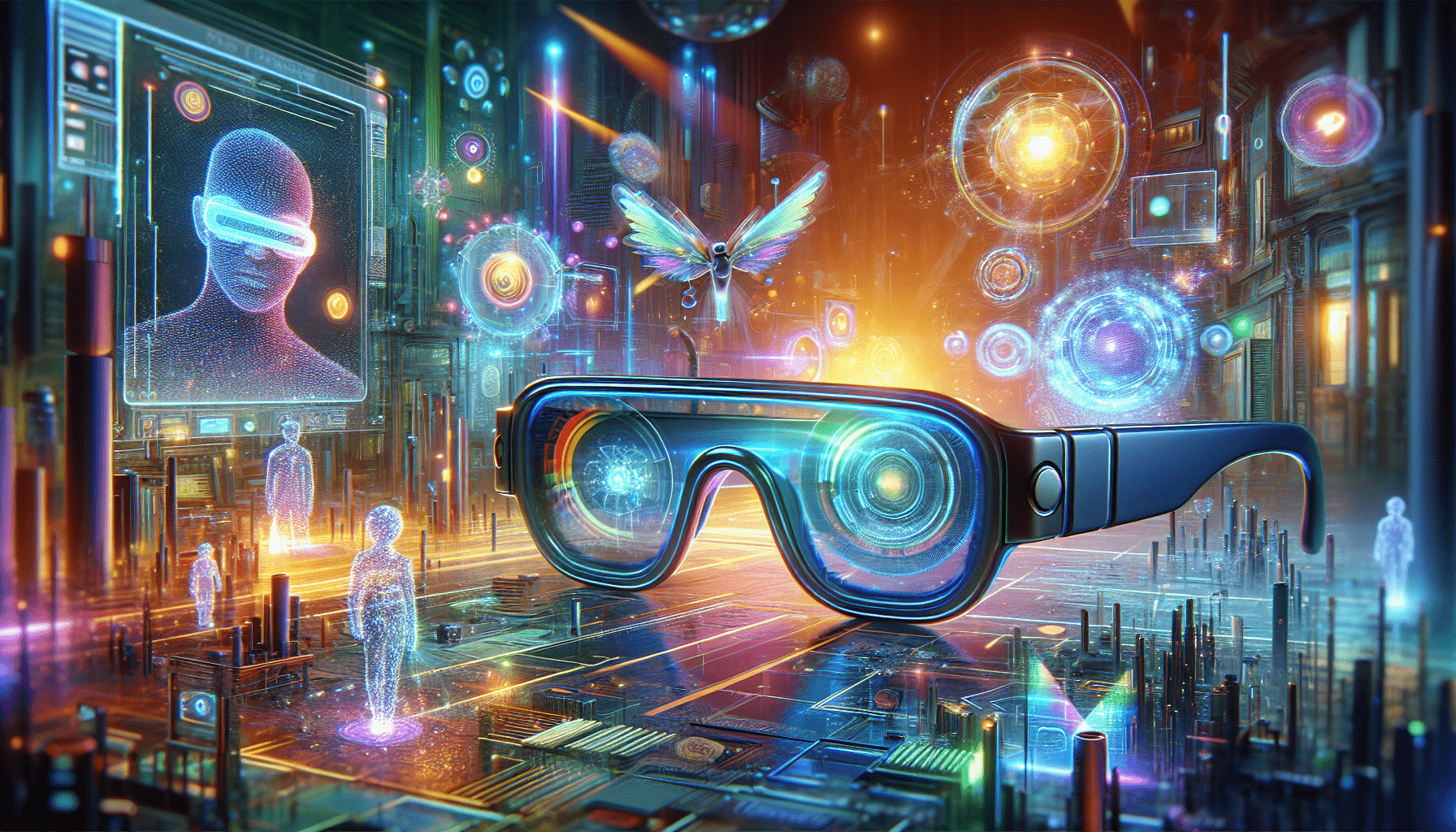Imagine scrolling through your social media feed and discovering interactive experiences that feel personal and unique to you. With Custom Augmented Reality Filters, that dream becomes a reality. These innovative digital overlays allow you to transform ordinary visuals into engaging and eye-catching content, perfectly tailored to convey your personality, brand, or message. Whether it’s enhancing selfies with playful elements or providing immersive brand experiences for your followers, custom AR filters are revolutionizing the way you interact with the world around you. Dive into the vibrant universe of augmented reality and see how customizable, dynamic filters can make your digital presence truly magical.
Custom Augmented Reality Filters
Have You Ever Wondered About the Magic of Custom Augmented Reality Filters?
Imagine snapping a selfie and seeing adorable puppies jumping around you or pointing your camera at your coffee mug and watching it transform into a galaxy of constellations. If this sounds fascinating to you, then you’re already a fan of augmented reality (AR) filters. But have you ever thought about creating your own custom AR filters? The world of AR is mesmerizing, and custom filters add a personal touch to your digital experience. Let’s dive into the vibrant world of custom augmented reality filters and explore how you can create and use them.
What Are Augmented Reality Filters?
Before we delve into the customization aspect, let’s clarify what augmented reality filters are. AR filters are computer-generated effects and animations that you can apply to live images from your camera. When you use an AR filter, it blends with reality, transforming ordinary experiences into extraordinary ones. These filters are popular on social media platforms like Snapchat, Instagram, and TikTok, allowing users to overlay digital content on real-world surroundings.
How Do AR Filters Work?
AR filters function through a combination of computer vision, facial recognition, and real-time processing. When you open your camera app and select an AR filter, the software scans your surroundings to identify key points like your face, objects, or environments. Once identified, the filter applies digital overlays that move and change with you in real-time. It’s technology at its finest, creating seamless and captivating experiences.

Why Create Custom AR Filters?
So, why should you invest your time in creating custom AR filters? The reasons are abundant, especially if you’re keen on technology, creativity, or even business growth. Custom AR filters let you:
- Express Creativity: Experiment with unique designs and concepts.
- Enhance Brand Identity: Engage customers by incorporating your brand elements into AR experiences.
- Increase Engagement: Social media users love sharing unique and fun content, making your custom filter a hit.
- Educational Purposes: Explain complex topics visually in educational materials.
- Personal Use: Make your photos and videos unique and memorable.
Benefits for Businesses
Custom AR filters provide businesses with a novel way to engage their audience. Imagine creating a filter that incorporates your brand’s logo, colors, or mascot. Users who employ these filters inadvertently promote your brand, reaching a broader audience.
Benefits for Developers and Designers
If you’re into software development or graphic design, creating custom AR filters can be a rewarding endeavor. It’s an opportunity to showcase your skills and potentially offer your services to brands and businesses. Plus, it’s an excellent way to stay ahead in a tech-driven world.
The Building Blocks of AR Filters
Creating a custom AR filter may seem daunting, but breaking it down into digestible pieces makes it manageable. Here are the typical building blocks you’ll need to understand:
Software and Tools
To create AR filters, you’ll need specialized software. Some of the most popular tools include:
| Tool Name | Description |
|---|---|
| Spark AR Studio | A comprehensive tool by Facebook to create AR effects for Facebook and Instagram. |
| Lens Studio | Developed by Snapchat, this tool allows you to create lenses with various interactive elements. |
| Adobe Aero | Focuses on creating augmented reality experiences with an intuitive, design-friendly interface. |
| ARKit | Apple’s framework for creating AR experiences on iOS devices. |
| ARCore | Google’s platform for building AR experiences on Android devices. |
Hardware Requirements
You don’t need a supercomputer to create AR filters, but a decent computer that can handle graphic design software is necessary. Depending on the complexity of your project, ensure you have the following:
- A PC or Mac with a decent processor.
- An adequate amount of RAM (at least 8GB for smooth operation).
- A modern GPU to handle 3D renderings and effects.
Skill Set
While you don’t need to be a coding expert, having a basic understanding of the following can make the process smoother:
- Graphic Design: Familiarity with tools like Photoshop or Illustrator can be a significant advantage.
- 3D Design: Knowledge in software like Blender or Cinema 4D for creating 3D models.
- Programming: Basic familiarity with programming languages like JavaScript can be helpful but is usually not mandatory for beginner tools.
Steps to Creating Your Own Custom AR Filter
Now that you’re equipped with the foundational knowledge, it’s time to walk through the actual process of creating a custom AR filter.

Step 1: Plan Your Concept
Before you jump into any software, planning your AR filter is crucial. Ask yourself:
- What is the purpose of the filter?
- Who is the target audience?
- What kind of elements (2D/3D) will it include?
- How will it interact with the user?
Brainstorm Ideas
A successful AR filter often starts with a simple idea. Keep a notebook or a digital platform to jot down ideas as they come. Sketch out possible designs and layouts to visualize how the AR effects will interact with the real-world elements.
Use Mood Boards
Creating a mood board can be incredibly helpful. You can combine various images, color schemes, and designs that align with your vision. A mood board will guide your design process and ensure consistency.
Step 2: Create Your Assets
Depending on your plan, you’ll need to create or source assets for your AR filter. These might include 2D images, 3D models, or animations.
2D Graphics
Design tools like Adobe Photoshop or Illustrator are excellent for creating 2D elements. Ensure that your graphics are high-resolution and saved in compatible formats like PNG or JPEG.
3D Models
If your AR filter requires 3D elements, you can create models using software like Blender or Cinema 4D. There are also several online resources where you can purchase or download free 3D models.
Animations and Effects
Animations can make your AR filter more dynamic and engaging. Tools like After Effects or specific features within AR software can help add motion to your elements. Ensure your animations are smooth and optimized for mobile devices to avoid lag.

Step 3: Assemble Your Filter in the Software
Once you have all your assets ready, it’s time to put them together in your chosen AR software.
Setting Up the Workspace
Open your AR tool (e.g., Spark AR Studio or Lens Studio) and set up your workspace. Each software has tutorials and documentation to guide you through the initial setup.
Importing Assets
Import your 2D and 3D assets into the software. Organize them into folders or layers to keep your workspace tidy and manageable.
Building Interactions
This is where the magic happens. Use the features of your AR software to define how your assets will interact with real-world elements. For example, you can create face tracking masks, object tracking elements, or even world effects that change the environment around the user.
Testing Your Filter
Testing is a crucial part of creating a custom AR filter. Most AR tools offer simulators that let you see how your filter will look on mobile devices. Test it on different devices to ensure compatibility and performance.
Step 4: Publish and Promote
Once your AR filter is ready and tested, it’s time to share it with the world.
Exporting
Each AR platform has its own export guidelines. Follow these to export your filter in the correct format. Tools like Spark AR require you to submit your effect for review before it goes live on platforms like Instagram or Facebook.
Promotion Strategies
- Social Media: Share your AR filter on various social media platforms to reach a broader audience.
- Influencers: Collaborate with influencers who can use and share your filter, increasing its visibility.
- Website and Blogs: Write articles or create web pages dedicated to your AR filter. Use SEO strategies to appear in search results.

Future Trends in AR Filters
The world of augmented reality is continuously evolving. Here are some trends to watch out for that could shape the future of custom AR filters:
Enhanced Interactivity
Future AR filters will likely feature more sophisticated levels of interactivity, allowing users to engage with digital elements in increasingly immersive ways. This could include voice interactions, gesture controls, and more intelligent spatial recognition.
AI-Driven Innovations
Artificial Intelligence (AI) will play a significant role in the evolution of AR filters. AI can enable real-time improvements and adjustments to filters, making them more personalized and adaptive to user preferences.
Cross-Platform Compatibility
As AR technology advances, we may see more cross-platform compatibility, making it easier to share and experience AR filters across different devices and operating systems.
AR in E-Commerce
Retailers and e-commerce brands might increasingly use AR filters to enhance online shopping experiences. Imagine trying on clothes, accessories, or even makeup virtually before purchasing them.
Privacy and Ethical Considerations
As AR technology becomes more pervasive, discussions around privacy and ethical considerations will also gain prominence. It’s essential to create responsible and respectful AR experiences that prioritize user privacy.
Conclusion: The Sky’s the Limit!
Custom AR filters are an exciting way to blend technology and creativity, giving you limitless opportunities to innovate and engage. Whether you are a business looking to enhance your brand, a developer wanting to stretch your creative muscles, or just someone looking to add a personal touch to your social media presence, custom AR filters can meet those needs. With the right tools, skills, and a dash of imagination, you can create AR experiences that captivate, educate, and entertain.
So, go ahead and experiment! The fascinating world of AR awaits your unique touch. Have fun designing, and who knows, your custom AR filter might just be the next big hit on social media!

